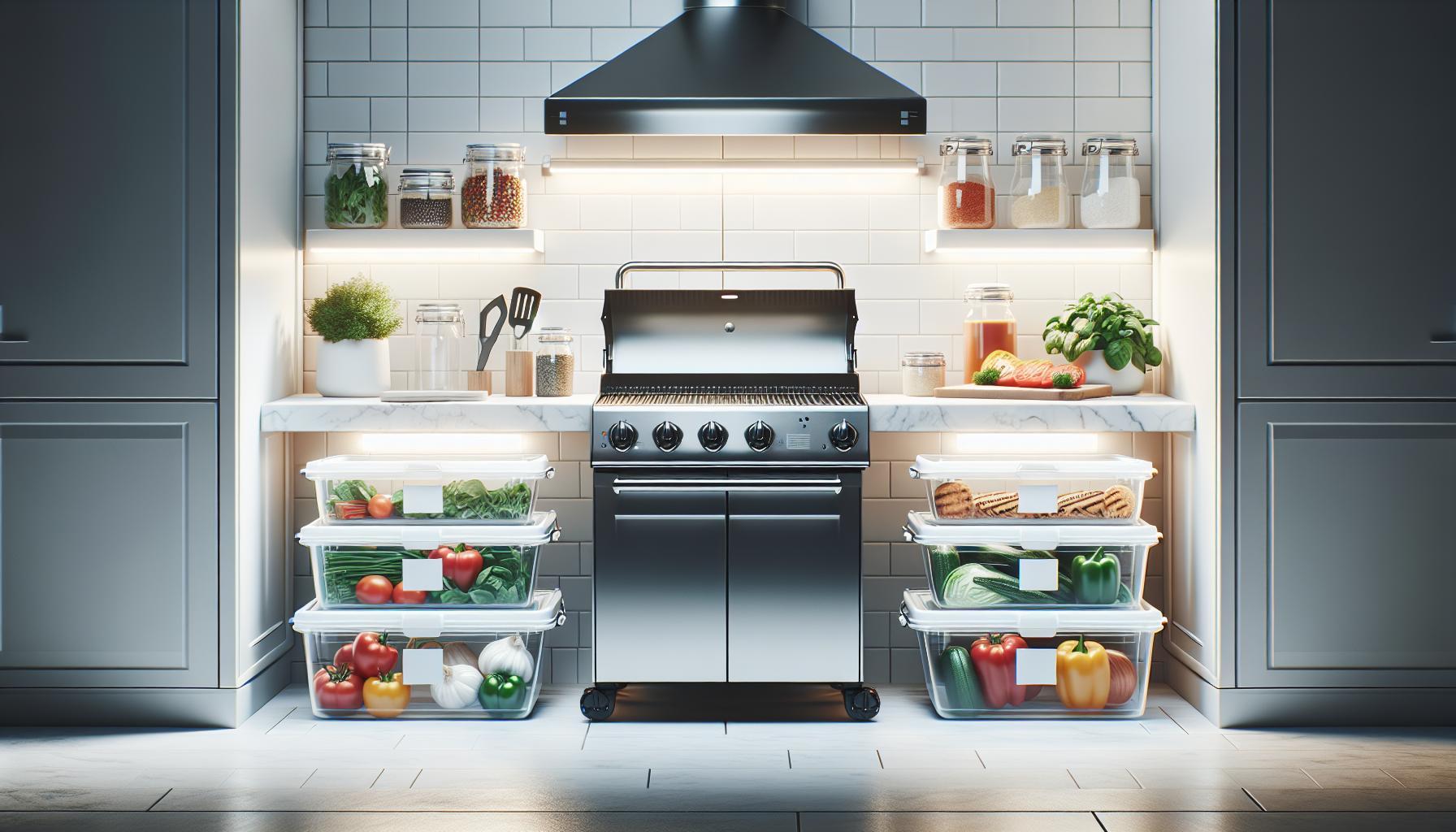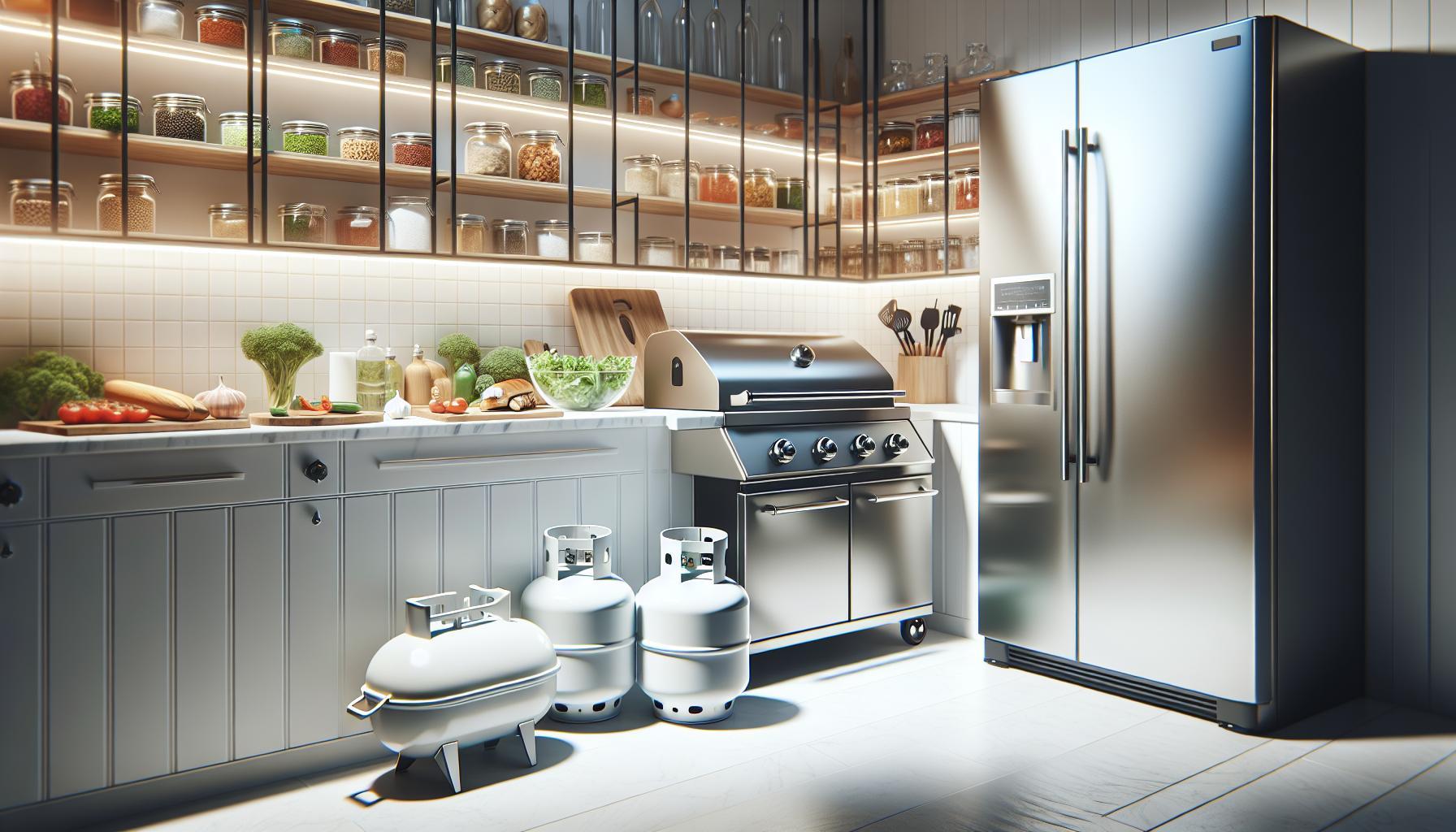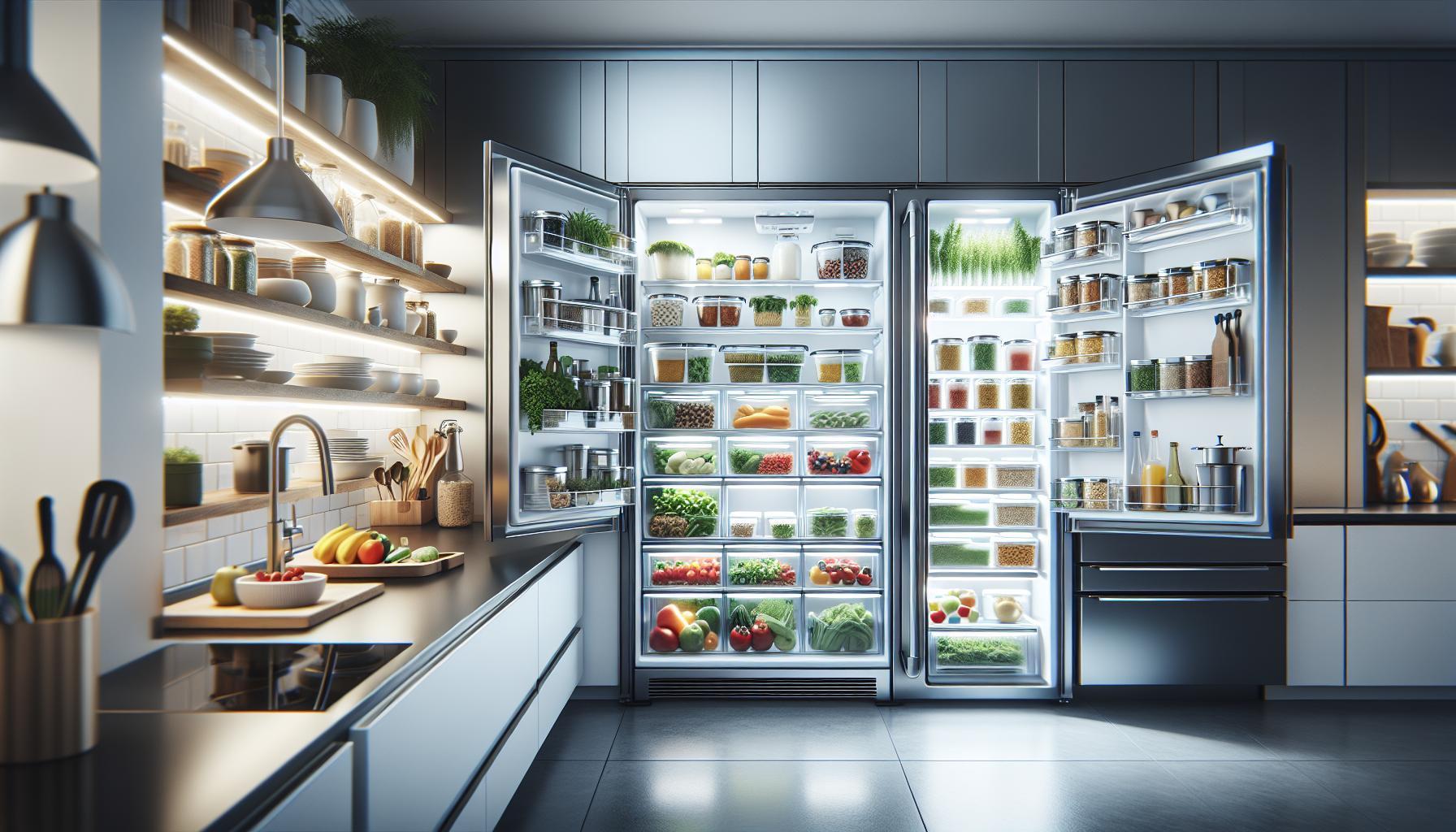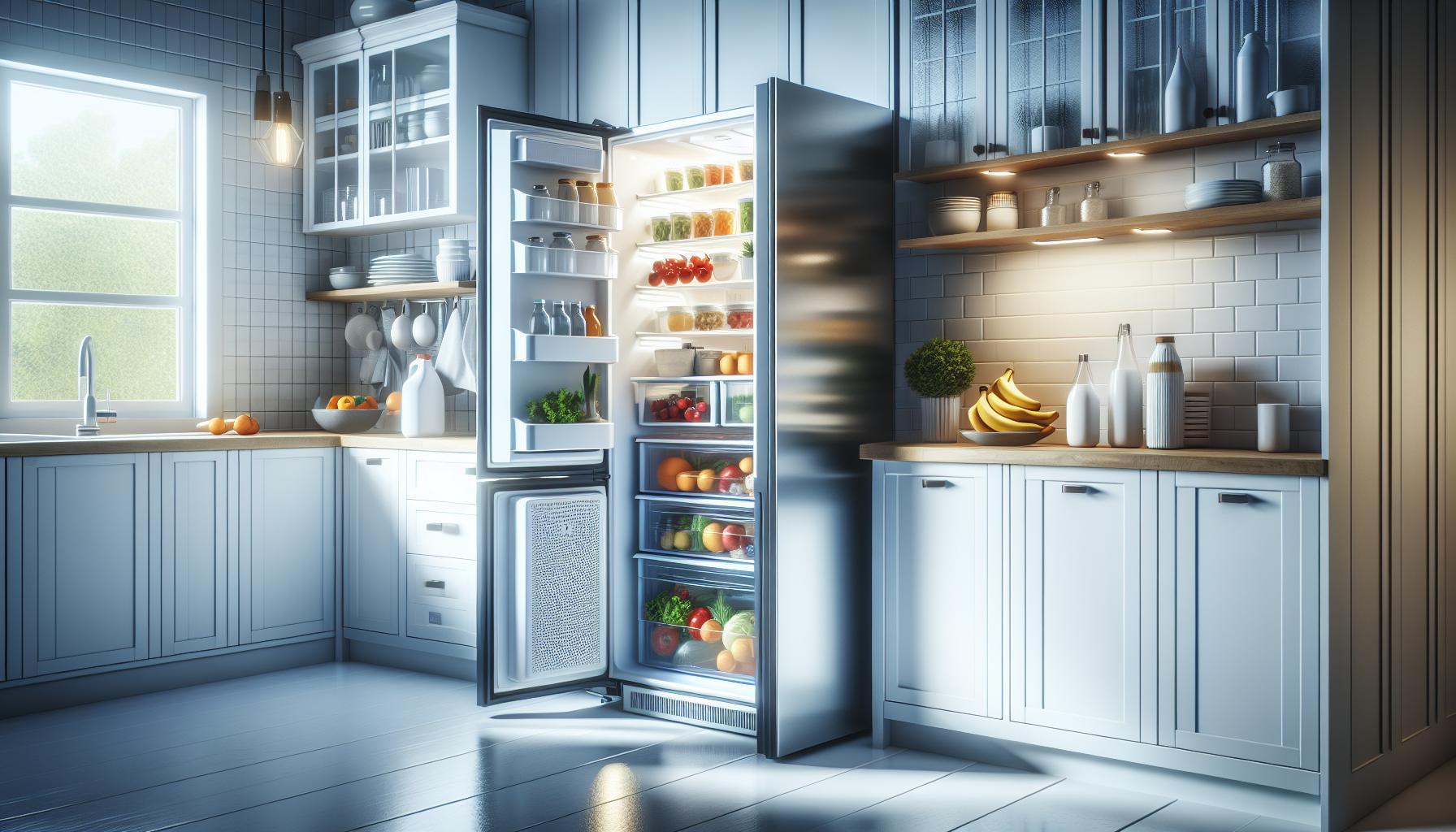Did you know that a standard 20-pound propane tank can provide fuel for approximately 18 to 20 hours of grilling time? Understanding how long your propane tank will last is crucial to ensuring a seamless and enjoyable outdoor cooking experience. Whether you’re hosting a summer barbecue or preparing a weeknight meal, running out of propane mid-cook can be frustrating and inconvenient.
In this guide, we’ll delve into the factors that influence your propane tank’s lifespan, including grilling frequency, temperature settings, and the efficiency of your grill. By being informed and prepared, you can grill smarter and safer, allowing you to focus on creating delicious meals without the worry of running out of gas. Join us as we explore how to maximize your propane use and enhance your grilling experience!
Understanding Propane Tank Sizes for Grilling
Understanding the size of propane tanks is crucial for anyone who enjoys grilling outdoors. Propane tanks come in various sizes, commonly ranging from 20-pound tanks used for portable grills to larger 100-pound tanks suited for bigger setups. The size of your propane tank significantly affects how long you can grill before needing a refill, making it important to understand your options based on your cooking habits and frequency.
For most home grillers, a standard 20-pound propane tank is sufficient. This tank provides about 430,000 BTUs of energy, allowing for approximately 18-20 hours of cooking time on medium heat. If you’re a frequent griller or prefer hosting larger gatherings, considering a 30 or 40-pound tank can offer more extended grilling sessions without the need for constant refills. Additionally, a 100-pound tank might be ideal for those who grill regularly or use a grill with higher BTU requirements.
When selecting a propane tank size, it’s essential to consider not only the size of your grill but also how often you use it and what types of cooking you enjoy. Smaller, portable tanks are perfect for camping or tailgating, while larger tanks provide the capacity needed for significant backyard barbecues. Ensure that your grill is compatible with the tank size you choose, as some setups may require specific fittings or hoses.
In summary, understanding propane tank sizes allows you to not only maximize your grilling efficiency but also enhance your outdoor cooking experience. Whether opting for a smaller tank for occasional use or a larger option for frequent grilling sessions, knowing your needs can help you make an informed decision that supports your grilling adventures.
Factors That Influence Propane Consumption
Understanding how long your propane tank will last when grilling hinges on several important factors. These elements can dramatically affect propane consumption, ensuring you have a clear idea of when to expect a refill.
One of the primary factors is the grilling temperature. Cooking at higher temperatures typically requires more propane. For instance, if you’re searing meats or grilling at high heat, your consumption will increase relative to using lower temperatures for slow-cooking or indirect grilling methods.
The type of grill you use also influences propane usage. Gas grills with high BTU (British Thermal Units) ratings consume more fuel than those with lower ratings. For example, a grill that operates at 30,000 BTUs will deplete a 20-pound tank faster than a grill rated at 20,000 BTUs, even when both are used for the same duration.
Additionally, the cooking time plays a significant role. Longer cooking times, such as when attempting to smoke larger cuts of meat, will use significantly more propane than quick grilling sessions. A more efficient grilling technique, such as pre-heating the grill and minimizing lid lifts, can help conserve fuel.
Environmental conditions, like wind and outdoor temperature, can also impact propane consumption. Wind can increase heat loss, requiring the grill to work harder to maintain temperature, while colder temperatures may necessitate longer cooking times.
Lastly, the frequency of use is a crucial consideration. If you grill often or host gatherings, your propane usage will increase, thus shortening the lifespan of your tank. Keeping a log of your grilling habits can help you predict when you might need a refill and ensure you’re more prepared for your next cookout.
Understanding these factors allows you to grill smarter and manage your propane consumption more effectively, leading to a more enjoyable outdoor cooking experience.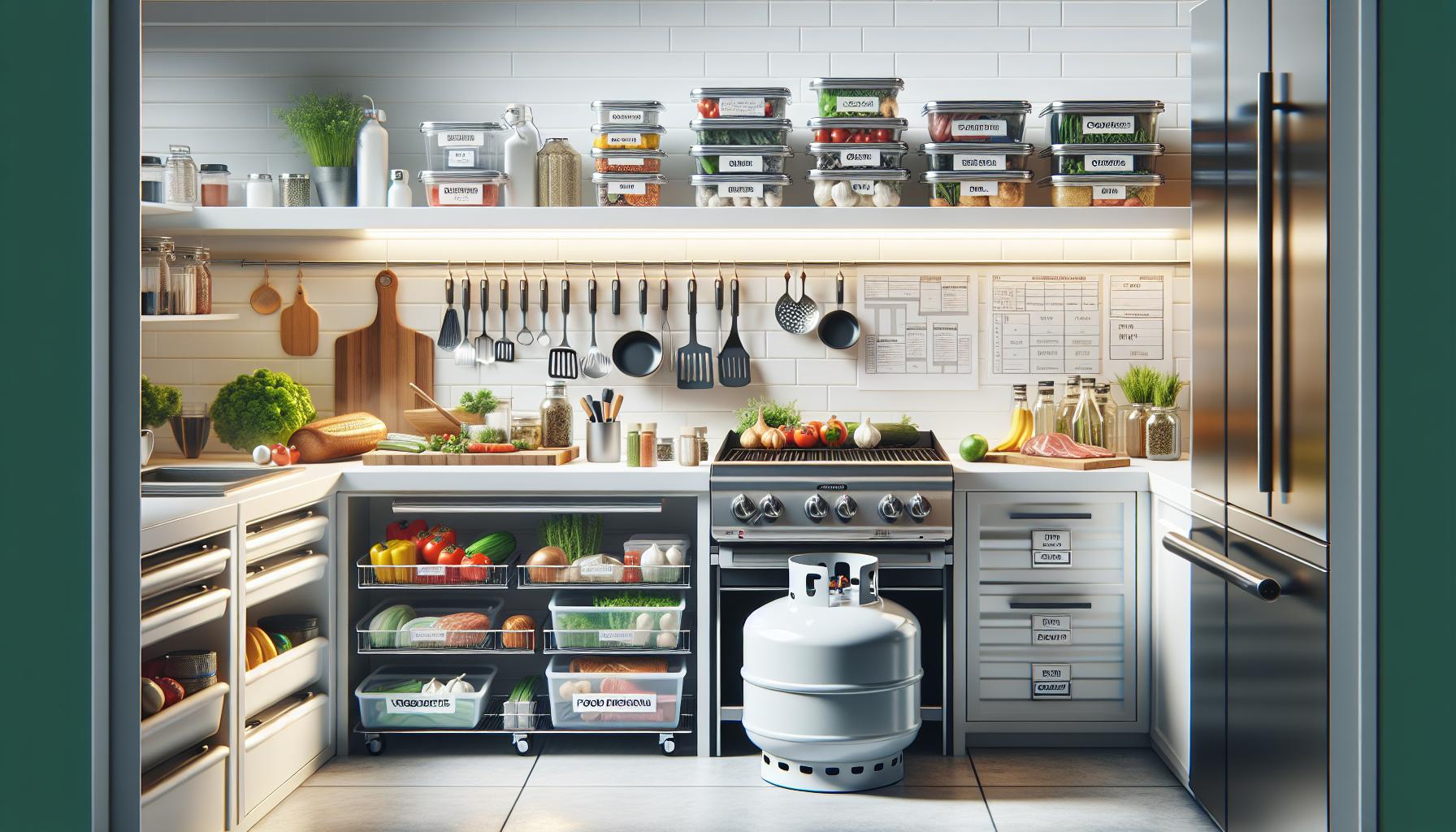
Estimating Propane Tank Duration on a Grill
The duration a propane tank lasts while grilling can seem somewhat elusive, but with the right understanding of your grill’s specific needs and some basic calculations, you can estimate it effectively. A standard 20-pound propane tank typically holds about 4.7 gallons of propane, which, in practical terms, is enough for approximately 18 to 20 hours of cooking time on a grill operating at a medium heat setting (around 25,000 BTUs).
To determine how long your tank will last, start by knowing the BTU rating of your grill. As a rule of thumb, you can use the following equation:
- Calculate total BTUs available: A gallon of propane contains about 91,500 BTUs. Multiply this by 4.7 (the gallons in a 20-pound tank) to get the total BTUs available.
| Measurement | Calculation | Result |
|---|---|---|
| Total BTUs | 4.7 gallons x 91,500 BTUs/gallon | 429,450 BTUs |
- Estimate burn time: Divide the total BTUs by the BTUs per hour your grill consumes. For instance, if your grill uses 30,000 BTUs, the calculation would be:
[
text{Burn time (hours)} = frac{text{Total BTUs}}{text{BTUs per hour}} = frac{429,450 text{ BTUs}}{30,000 text{ BTUs/hour}} approx 14.3 text{ hours}
]
By adjusting the BTU usage according to your cooking style-higher for searing and lower for slow cooking-you can get a more tailored estimate.
When planning your grilling session, consider other factors that can influence consumption, such as the cooking method, wind, and even how often you lift the grill lid, all of which can cause the grill to work harder, thus using more propane. By taking these variables into account, you equip yourself to estimate your propane tank’s duration accurately, allowing for better planning and uninterrupted cooking during your outdoor gatherings.
Signs Your Propane Tank is Running Low
When grilling, it’s crucial to recognize when your propane tank is running low to avoid unexpected interruptions during your cookout. One of the most telltale signs is a change in flame intensity. If you notice the flames are lower than usual or flickering unexpectedly, it could indicate that the propane supply is dwindling. Additionally, when your grill is heated up for a while but struggles to maintain temperature, it may signal that the tank is nearly empty.
Another clear indication of a low propane tank is when the grill takes significantly longer to reach the desired cooking temperature. This sluggish performance can stem from insufficient gas flow, directly linked to how much propane is left. If you hear a gurgling sound, it’s often due to propane liquid sloshing around in the tank, which indicates that you’re running low. With proper attention and preparation, these signs can help you avoid being caught off guard when grilling.
- Check the gauge: If your tank is equipped with a gauge, utilize it regularly. A gauge reading below a quarter suggests it’s time to refill.
- Weigh your tank: For tanks without a gauge, you can weigh it as a quick method to estimate how much propane remains. A standard 20-pound tank that’s full weighs about 37 pounds, while an empty tank weighs approximately 17 pounds.
- Smell for leaks: Always be vigilant for the distinct smell of propane-similar to rotten eggs. If you detect this odor, turn off the tank immediately and have it inspected.
By being attentive to these signs, you can maintain a smooth grilling experience, ensuring you have enough fuel for all your cooking needs without interruption. Planning ahead and regularly checking your propane levels not only enhances your grilling efficiency but also contributes to overall grilling safety.
Maximizing Propane Efficiency While Grilling
To achieve the most from your propane supply while grilling, it’s essential to employ strategies that enhance efficiency and minimize wastage. One of the simplest yet most effective methods is controlling the heat. Utilize two-zone cooking by arranging your propane grill with a hot side for searing and a cooler side for cooking through. This technique allows you to sear your meats quickly while finishing them off over indirect heat, ultimately saving propane by reducing the amount of direct flame application.
Another key practice is to preheat your grill properly. It’s tempting to turn the flame up high to hasten the process, but this not only wastes propane but can also lead to uneven cooking. Instead, preheat your grill over a lower flame to allow it to reach the ideal temperature gradually. This method ensures better fuel efficiency and helps maintain the longevity of your grill components.
Additionally, consider the weather conditions, as they can significantly impact propane consumption. Grilling in windy or cold conditions may require you to use more fuel to maintain temperature. Cover your grill when not in use and consider using windbreaks to protect it from drafts. Moreover, using a grill cover can help retain heat when cooking, further optimizing propane usage.
While cooking, keep the lid closed as much as possible. Each time you open the lid, heat escapes, requiring more fuel to bring the grill back to the desired cooking temperature. By being mindful of these practices, you can extend the life of your propane tank and ensure that your grilling sessions are both cost-effective and enjoyable.
- Control the heat: Use a two-zone cooking setup for optimal efficiency.
- Preheat properly: Avoid high flames for preheating, use a lower setting.
- Mind the weather: Protect your grill from wind and cold.
- Keep the lid closed: Reduce heat loss to conserve fuel.
Safety Tips for Handling Propane Tanks
When handling propane tanks, prioritizing safety is essential to ensure a smooth grilling experience. Propane is a highly flammable gas, so understanding proper storage, usage, and maintenance protocols can prevent accidents and ensure the longevity of your tank.
Always store your propane tank in a well-ventilated area, away from direct sunlight and heat sources. It’s crucial to keep the tank upright and securely connected to your grill when in use. If you need to transport the tank, make sure it remains upright in your vehicle and never leave it in a closed car, as heat buildup can cause increased pressure and potentially lead to an explosion. It’s advisable to check for any signs of rust or damage before use; a compromised tank can be dangerous.
Regular inspections are key to safe propane usage. Before lighting your grill, perform a quick check for leaks by applying a solution of soap and water to all connections and hoses. If you see bubbles forming, this indicates a leak. Always address leak issues immediately by turning off the tank and discontinuing use until repairs are made. Additionally, ensure that your grill is clean and that the burners are clear to avoid flare-ups.
Educating yourself and those around you about propane safety is fundamental. Keep a fire extinguisher rated for flammable gases nearby, particularly during your grilling sessions. Understanding the operation of your grill, including the location of the safety shut-off and how to use it in case of an emergency, adds another layer of protection.
Following these safety guidelines not only protects you and your loved ones but also enhances your grilling enjoyment. Being proactive about safety means you can focus more on cooking delicious meals and less on potential hazards.
How to Check Your Propane Tank Levels
To ensure uninterrupted grilling sessions, knowing is essential. A sudden out-of-gas moment can turn a festive barbecue into a frustrating experience. Fortunately, there are simple methods for determining how much propane remains in your tank, and they don’t require specialized tools.
One of the most straightforward techniques is the hot water method. Begin by pouring hot water down the side of the tank. Propane tanks are made from metal, and the surface temperature of the tank will change with the liquid inside. Once you’ve poured the water, run your hand along the tank. Where the tank feels cool, that’s the level of propane: the liquid propane inside absorbs heat, making that section feel cooler compared to the gas-filled upper portion. This method is highly effective and gives you a visual cue of your propane level.
Another reliable method is to use a propane gauge, which connects to your tank and provides a digital or analog reading of the remaining fuel. These gauges are easy to install and can help you keep tabs on propane levels without needing to check manually each time you grill. Some newer grill models come with built-in gauges, making it even more convenient.
Regardless of the method you choose, it’s important to regularly monitor your propane levels before hosting any grilling events to avoid surprises. Remember, the general rule of thumb is to consider refilling or replacing your tank when it’s about 20% full, especially if you plan to host larger gatherings. Keeping track of your fuel not only ensures a smoother grilling experience but also enhances safety by preventing you from operating an empty or nearly empty tank, which can lead to undesirable rust and deterioration.
When to Replace Your Propane Tank
Knowing is crucial for maintaining safety and ensuring your grilling experience is hassle-free and enjoyable. Propane tanks have a lifespan of about 12 years, but this does not mean that every tank will necessarily last that long. Regular inspections and awareness of certain signs can help determine when it’s time to retire your tank.
A heavily rusted or damaged propane tank is a clear indicator that it should be replaced immediately. Rust can compromise the integrity of the tank, leading to potential leaks that pose serious safety hazards. Always check the exterior for signs of corrosion, cracks, or dents. If you notice significant wear or any irregularities, don’t hesitate to swap it out for a new one.
Another practical guideline is to keep an eye on the expiration date stamped on the tank. Each tank is required to have a manufacturing date on its collar, and it must be recertified every 5 years if it’s to remain in service. After 12 years from the original manufacture date, replacement is mandatory, regardless of the tank’s condition. If you are unsure about the status of your tank, refer to your local propane supplier or regulator for advice and proper disposal guidance.
Lastly, it is also wise to consider replacing your propane tank if you frequently experience unexpected low fuel levels during grilling sessions. If your tank appears to deplete more quickly than usual, it might indicate internal damage or leaks. Conducting regular checks will help you identify such issues early on and maintain a robust and safe grilling experience. Remember, when it comes to propane safety, it is always better to be safe than sorry.
Eco-Friendly Alternatives to Propane Grilling
Grilling enthusiasts seeking a more sustainable cooking method have several that can reduce their environmental impact. One popular option is electric grills, which operate solely on electricity and produce no greenhouse gas emissions during cooking. They come in various sizes and can be used both indoors and outdoors, making them versatile for different grilling experiences. As long as the electricity is sourced from renewable energy, such as solar or wind, electric grilling can become a highly sustainable option.
Another increasingly popular choice is charcoal grills that utilize organic lump charcoal or charcoal briquettes made from natural materials. Unlike traditional propane sources, high-quality lump charcoal has a smaller carbon footprint and burns cleaner. When sourced from sustainably managed forests, organic charcoal provides a carbon-neutral grilling experience. Additionally, many charcoal brands now implement environmentally friendly manufacturing processes, ensuring that their products align with eco-conscious values.
For those looking for a direct connection to nature, wood pellet grills present an innovative alternative. These grills burn compressed wood pellets made from sawdust, offering a unique wood-fired flavor to grilled foods. Pellet grills are efficient and can be used to smoke, bake, or roast, making them a multifunctional choice for outdoor cooking. Sustainable wood pellet manufacturers often practice responsible forestry, further enhancing the eco-friendliness of this option.
Ultimately, making eco-friendly choices while grilling not only reduces reliance on fossil fuels like propane but also elevates the flavor of meals with natural wood and charcoal. Transitioning to these alternatives varies in ease and investment, but the benefits to both the environment and your grilling experience can be well worth it. Embracing these methods allows outdoor cookers to enjoy delicious meals while caring for the planet.
Common Propane Myths Debunked
Myths surrounding propane can create confusion for grilling enthusiasts, potentially affecting safety and performance during cooking. One common misconception is that all propane tanks are the same and can be used interchangeably for various appliances. In reality, propane tanks come in different sizes and fittings, which are designed for specific uses. For example, a 20-pound tank is standard for home grills, while larger tanks are used for commercial applications or RVs. Using the incorrect size or type of tank can lead to inefficient fuel delivery or safety hazards.
Another prevalent myth is that propane is dangerous and should be avoided entirely. While it is crucial to handle propane with care, when used and stored correctly, propane is a safe and dependable fuel source. Understanding the safety protocols-such as regular inspection of tanks, ensuring good ventilation during use, and not overfilling tanks-can mitigate risks significantly. In fact, propane produces fewer emissions than many other fuel sources, making it a relatively eco-friendly choice when compared to coal or charcoal.
Many believe that a propane tank will always run out unexpectedly. However, with proper monitoring practices, grillers can avoid this situation. Using a weight scale, keeping track of the amount of gas used, or investing in a tank gauge can provide valuable insights into the remaining fuel. Following these practices will enable you to prepare for grilling sessions without the stress of running out mid-cook.
Another myth involves the idea that propane tanks should be stored indoors for convenience. This is a dangerous practice as propane is heavier than air and can accumulate in enclosed spaces, posing a significant explosion risk. Instead, always store propane tanks in a well-ventilated outdoor area, away from heat sources and direct sunlight to maintain safety and integrity.
By debunking these myths, you can grill smarter and safer while enjoying the benefits of propane as a fuel for your outdoor cooking adventures. Knowledge is key-ensuring you’re informed about proper use and storage practices will enhance your grilling experience and keep everyone safe.
Troubleshooting Common Propane Grill Issues
Grilling can be a delightful experience, but encountering issues with your propane grill can put a damper on the festivities. One of the most common problems is inconsistent heating, which usually stems from a few key issues. First, a clogged burner is often the culprit. If you notice that your flames are uneven or weak, it’s time to check the burners for dirt or grease buildup. Cleaning them with warm, soapy water and a soft brush can restore optimal performance. Additionally, ensure that the gas flow is unobstructed; sometimes, the burner holes become blocked, which limits the fuel supply.
Another frequent issue is the tank running low prematurely, leading to anxiety during grilling sessions. This problem can often be traced back to a malfunctioning regulator, which controls the gas flow from the tank to the grill. If your grill is losing heat quickly or shutting off unexpectedly, it may be time to inspect the regulator and potentially replace it. Also, consider investing in a reliable tank gauge to keep an eye on fuel levels and avoid surprises during cookouts.
Temperature regulation is also vital for successful grilling. If your grill’s temperature is inconsistent, check the lid seal and burner operation. A damaged or worn seal can lead to heat loss, making it difficult to maintain desired cooking temperatures. As a quick fix, closing the lid tightly while grilling can help retain heat better. Additionally, always check for propane leaks before each use, as this can not only cause operational issues but also pose safety risks. To check, simply apply a mix of soap and water to the connections-bubbles will form if there’s a leak.
In summary, by routinely inspecting the key components of your propane grill-burners, regulators, and seals-you can troubleshoot common issues effectively. Keeping a maintenance checklist can also assist in identifying concerns early on, ensuring your grilling adventures remain enjoyable and stress-free.
Frequently Asked Questions
Q: How can I determine how much propane is left in my tank before grilling?
A: To check the propane level, you can use a simple method: pour warm water down the side of the tank. Feel for temperature changes; the cooler area indicates the propane level. For a more precise measurement, use a propane gauge. This will help ensure you don’t run out while grilling.
Q: What are the safety tips for storing propane tanks?
A: Store propane tanks upright in a cool, ventilated area away from direct sunlight and heat sources. Ensure the tank is closed tightly and consider using a protective cover. Regularly check for leaks by applying a soapy water solution to the valve and connections; bubbles indicate a leak.
Q: Can I use my propane grill during winter?
A: Yes, but be cautious. Propane tank pressure can drop in cold temperatures, affecting performance. Keep the tank warm, avoid grilling in extreme cold or windy conditions, and ensure you regularly check fuel levels, as usage may increase with longer cook times in winter.
Q: What common mistakes should I avoid when using a propane grill?
A: Avoid over-tightening connections, as it can cause leaks. Do not leave the grill unattended, and always ensure proper ventilation. Be cautious of grease build-up to prevent flare-ups, and regularly inspect hoses for wear or damage. These practices ensure safer grilling.
Q: How do different grill settings affect propane usage?
A: Higher grill settings consume propane faster due to increased heat output. Cooking at medium or low settings conserves fuel and is often suitable for longer meals or when grilling delicate foods. Adjust settings as needed and monitor propane levels to manage consumption effectively.
Q: Is it safe to leave a propane tank outdoors?
A: Yes, as long as it’s secured and placed in a well-ventilated area, preferably upright. Avoid areas near ignition sources or where extreme weather can cause damage. Ensure the tank is covered to protect it from elements and regularly inspect for wear or rust.
Q: How long can I expect my propane tank to last while grilling?
A: A standard 20-pound propane tank typically lasts about 18-20 hours on medium heat, depending on grill size and cooking style. For more accurate estimates, consider your specific usage habits, grill efficiency, and heat settings, as these factors significantly impact duration.
Q: Can I refill a propane tank myself?
A: No, refilling propane tanks should always be done by certified professionals to ensure safety and compliance with regulations. Attempting to refill a tank on your own can be extremely dangerous. Always visit licensed propane suppliers for safe and proper tank refills.
Closing Remarks
Now that you know how to estimate the duration of your propane tank on the grill, it’s time to apply this knowledge for safer and more enjoyable grilling experiences. Remember, managing your propane effectively not only enhances your cooking but also ensures the safety of your outdoor gatherings. Don’t miss out on our related articles, such as “Maximizing Your Grill’s Efficiency” and “Essential Safety Tips for Gas Grills,” to elevate your grilling skills even further.
If you have lingering questions or want to share your grilling tips, please comment below! Explore our site for more resources tailored to all your grilling needs and sign up for our newsletter for the latest updates and exclusive content. Your grilling adventure starts now-keep it safe, smart, and delicious!

